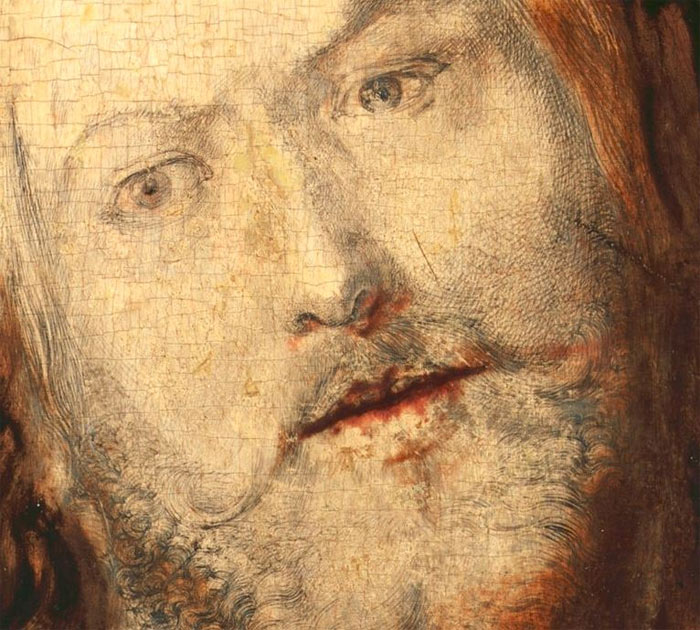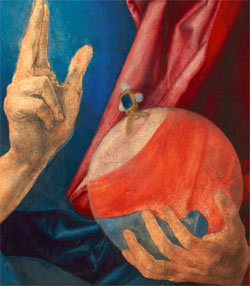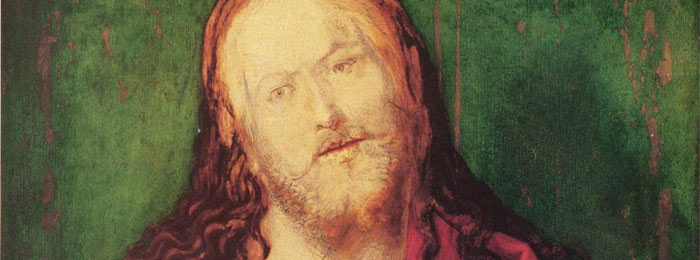Article by Anders E. Johnson
Albrecht Dürer’s Salvator Mundi, although not completely finished, is in its own right a marvelous display of the draftsman work of arguably one of the most skilled artists the German lands has ever produced. Come, dear reader, and let us admire this glistening pearl of a painting!

Salvator Mundi by Albrecht Dürer (1471–1528)
Before 1505, oil on linden wood, 58.1 × 47 cm (22.8 × 18.5 in)
Metropolitan Museum of Art
Although it is unknown when Dürer started this piece, it is generally accepted that he placed his final brushstroke around 1504, just four years after the recently renowned and world’s most expensive painting of Leonardo Da Vinci Salvator Mundi was completed. It is easily assumed, therefore, that Dürer must have somehow drawn influence from Leonardo’s work but instead executing it with his own style and artistic skill.
One reason that this unfinished painting deserves the title of ‘masterpiece’ is due to its under drawing layer. The preliminary work for this painting shines with Durer’s specialty: precise drafting. As is typical with his drawings, sketches, and print work, Dürer utilizes the illusion of depth, shadow, and texture by carefully drawing fine lines and creating various forms of crosshatching. When one looks close up to the painting, the awe of the meticulous line work appears to almost be mechanical. Each line is made with much thought and with gentle precision which aids in achieving a netlike linear appearance with three dimensions.

Salvator Mundi only contains a single fully rendered component: the clothing of Christ made up of two red and blue garments. The illustrious crimson red robe of the Lord signifies His divinity while the blue article lying underneath represents the humble yet spotless and powerful humanity of Christ. It is most typical of Christian iconography to depict Christ’s image theologically; entailing the task of truthfully and faithfully depicting the two natures of Jesus Christ: human and divine.

The renaissance Salvator Mundi, Latin for Savior of the World, stems from a much older Byzantine tradition of Christian art; more specifically the Greek icon titled Christ the Pantocrator, or all powerful. In Dürer’s Northern Renaissance version, he adds in Christ’s right hand a globe of the world, representing all of creation. Being the Word of God, it was by Christ that all of the visible and invisible creation came into existence, which Durer so well illustrates in his painting of the Lord’s two robes, the blessing sign given by His hand, and the globe which he holds. If an admirer, or more appropriately, a venerator, who lived in the time of Durer, were to gaze at this painting, be it finished or not, he or she would undoubtedly recognize the portrayed theological teaching instantly, which emanates from the painting’s brilliant brushstrokes, colors, and lines.

What can we moderns learn from such a painting which remains unfinished for over five centuries? Durer in this piece teaches the untrained artist that without controlling the reigns of quality line-work and drawing, one cannot then steer his skill to apply colors, glazes and fully render a painting to lifelike finesse. Therefore, it is critical to master the art of drawing and how to represent on flat paper what the eye or imagination sees from the third dimension. This acts as the skeletal structure. This is comparable to our human skeleton which acts as a strong support and provides movement to the colorful members of the body: the muscles, veins, and skin. Likewise, color upon an under drawing brings a pale skeleton to frolicly spring with color and flowing beauty.





